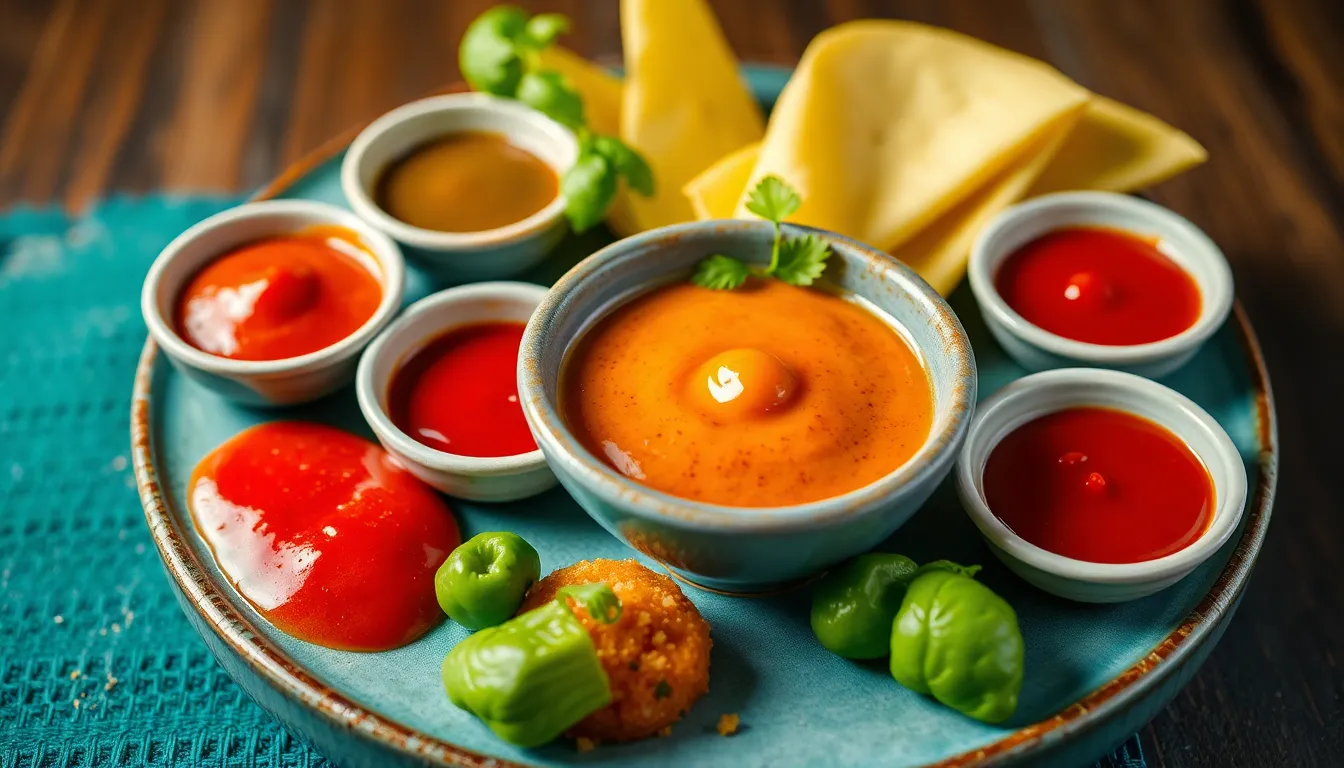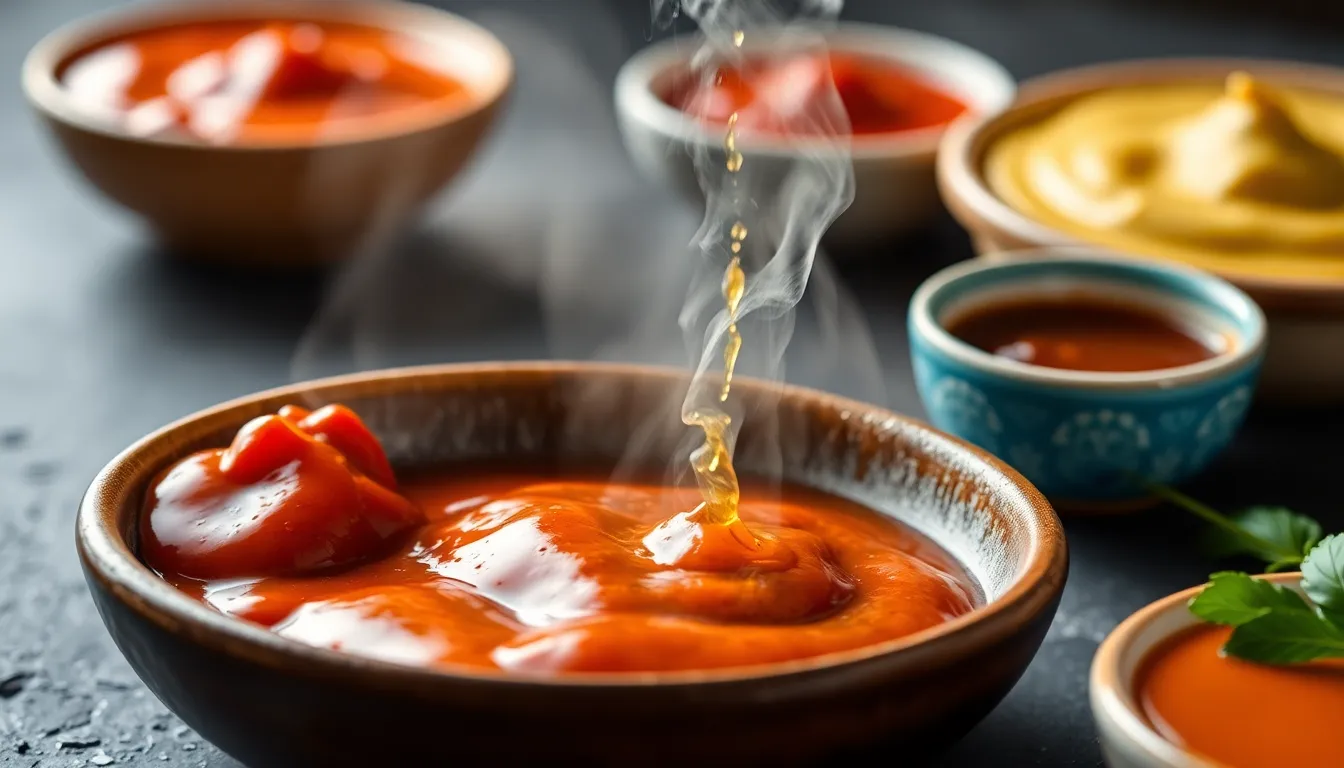A Beginner’s Guide to Essential Sauces: Start Cooking Like a Pro
Welcome to the flavorful world of sauces! For many, sauces are the unsung heroes of the culinary landscape, transforming ordinary ingredients into extraordinary dishes. Whether you’re whipping up a simple dinner or hosting a grand feast, mastering a few essential sauces can elevate your home cooking to professional levels. This guide will take you through the basics of sauce making, helping you experiment with flavors and inspiring you to become a more confident cook.
1. The Sauce Spectrum: Understanding the Basics
Before diving into specific recipes, it’s essential to understand what constitutes a sauce and how they play a vital role in cooking. A sauce is typically a flavorful liquid or semi-liquid that enhances a dish, adding moisture, flavor, and visual appeal.
- Mother Sauces: These are the foundational sauces from which many others are derived. They include Béchamel, Velouté, Espagnole, Tomato, and Hollandaise.
- Derivative Sauces: These are sauces that are created by modifying or adding ingredients to the mother sauces, such as Mornay or Bordelaise.
Understanding the balance of flavors is also crucial. A well-crafted sauce typically incorporates:
- Sweetness: Often from ingredients like sugar or caramelized onions.
- Saltiness: Adds depth, often from salt or soy sauce.
- Sourness: Can be introduced via vinegar or citrus.
- Bitter: Found in certain herbs and spices.
- Umami: The savory flavor, present in ingredients like mushrooms or tomatoes.
2. Mastering the Mother Sauces: Your Culinary Foundation
| Sauce Name | Ingredients | Key Techniques | Common Uses | Flavor Profile |
|---|---|---|---|---|
| Béchamel | Butter, flour, milk | Roux preparation, tempering | Macaroni and cheese, lasagna | Creamy, mild |
| Velouté | Stock, roux | White stock creation, thickening | Soups, sauces, gravies | Light, savory |
| Espagnole | Brown stock, roux, mirepoix | Brown stock preparation, reduction | French sauces, stews | Rich, deep |
| Tomato | Tomatoes, onions, garlic | Sautéing, simmering | Pasta dishes, pizzas | Sweet, tangy |
| Hollandaise | Egg yolks, butter, lemon | Emulsification | Eggs Benedict, vegetables | Rich, tangy |
2.1 Béchamel: The Creamy Classic
Béchamel is one of the simplest yet most versatile sauces, often referred to as a white sauce. Originating from Italy, it’s a staple in French cuisine as well. Its creamy texture makes it a perfect base for a variety of dishes.
Key Ingredients:
- Butter
- Flour
- Milk
- Salt and nutmeg (optional)
Preparation Steps:
- In a saucepan, melt butter over medium heat.
- Add flour to create a roux, whisking constantly for about 2 minutes.
- Gradually add milk, whisking until the mixture thickens.
- Season with salt and a pinch of nutmeg.
Tips for Making the Perfect Béchamel:
- Ensure the milk is warmed but not boiling before adding it to the roux.
- Whisk continuously to avoid lumps.
- For a richer flavor, use whole milk or even add cheese for a Mornay sauce.
2.2 Velouté: The Versatile Gem
Velouté, meaning ‘velvety’ in French, is a light stock-based sauce, made by thickening a white stock with a roux. Its neutrality makes it an ideal canvas for a variety of flavors.
Cooking Techniques:
- Start with a light stock (chicken, fish, or vegetable).
- Create a roux by cooking equal parts flour and fat until pale.
- Add the warm stock gradually while whisking to create a smooth sauce.
Recommended Pairings and Recipes:
Velouté pairs beautifully with poultry, seafood, and vegetables. Try it drizzled over poached chicken or as a base for a creamy soup.
Common Pitfalls to Avoid:
- Not cooking the roux long enough, which can leave a raw flour taste.
- Adding stock too quickly, leading to lumps.
2.3 Espagnole: The Rich and Robust
Espagnole, or brown sauce, is a deeply flavored sauce made from a brown stock, mirepoix, and brown roux. It’s the foundation for many classic sauces and is essential for creating rich gravies.
How to Use Espagnole as a Base for Other Sauces:
- Bordelaise: Add red wine and shallots.
- Chasseur: Incorporate mushrooms and herbs.
Suggestions for Enhancing the Sauce:
- Use quality stock to deepen the flavor.
- Incorporate aromatics, such as bay leaves or thyme.
2.4 Tomato: The Heart of Italian Cuisine
Tomato sauce is a cornerstone of Italian cooking, with various styles ranging from simple marinara to spicy arrabbiata. The key to a great tomato sauce lies in the quality of your tomatoes and cooking method.
Different Varieties of Tomato Sauces:
- Marinara: Simple sauce with tomatoes, garlic, and herbs.
- Arrabbiata: Adds chili flakes for a spicy kick.
- Putanesca: Includes olives, capers, and anchovies.
Cooking Methods for a Rich Tomato Sauce:
- Sauté onions and garlic in olive oil.
- Add crushed or chopped tomatoes and let simmer.
- Season with salt, pepper, and herbs.
Pairing Suggestions:
- Pasta: Spaghetti with Marinara
- Proteins: Chicken Parmesan with Tomato Sauce
2.5 Hollandaise: The Luxurious Emulsion
Hollandaise is a classic French sauce known for its buttery richness and tangy flavor, primarily used in breakfast dishes like Eggs Benedict. Understanding emulsification is key to mastering Hollandaise.
Step-by-Step Guide to Achieving a Stable Hollandaise:
- In a heatproof bowl, whisk together egg yolks and lemon juice.
- Place the bowl over a pot of simmering water (double boiler).
- Slowly drizzle in melted butter while whisking until thickened.
Creative Uses Beyond Eggs Benedict:
- Drizzle over steamed asparagus.
- Use as a dip for artichokes.
3. Beyond the Basics: Derivative Sauces to Impress
Once you’ve mastered the mother sauces, it’s time to explore derivative sauces—those delightful creations that stem from the foundations of classic sauces.
Examples of Popular Derivative Sauces:
- Mornay: A cheesy version of Béchamel.
- Bordelaise: A red wine sauce based on Espagnole.
- Salsa Verde: A fresh, herb-based sauce.
3.1 Mornay: The Cheesy Delight
Mornay sauce is a creamy, cheesy derivative of Béchamel, perfect for enhancing pasta dishes or vegetables.
Recipe and Tips for Variations:
- Prepare Béchamel as described above.
- Stir in grated cheese (Gruyère or Parmesan) until melted.
- Adjust seasoning to taste.
Pairing Suggestions with Vegetables and Proteins:
- Macaroni and Cheese
- Vegetable Gratin
3.2 Bordelaise: The Sophisticated Choice
Bordelaise is a luxurious sauce made from red wine, shallots, and Espagnole. It’s perfect for elevating meats such as steak or lamb.
Ingredients and Preparation Methods:
- Use high-quality red wine and a rich beef stock.
- Reduce wine and shallots in a saucepan before adding to Espagnole.
Best Dishes to Complement with Bordelaise:
- Grilled Steak
- Lamb Chops
3.3 Salsa Verde: The Fresh and Zesty
Salsa Verde is a vibrant, herb-based sauce, often used in Italian cuisine. Its freshness makes it a great accompaniment for grilled meats and fish.
Different Regional Variations of Salsa Verde:
- Italian: Parsley, capers, and garlic.
- Mexican: Tomatillos, cilantro, and jalapeños.
How to Customize for Personal Taste:
- Add avocados for creaminess.
- Incorporate different herbs like basil or mint.
4. Tips and Tricks: Elevating Your Sauce Game
To truly master the art of sauce making, having the right tools and techniques at your disposal is essential.
Essential Tools and Equipment for Sauce-Making:
- Whisk: For emulsifying and mixing.
- Saucepans: Different sizes for various sauces.
- Measuring cups and spoons: For accuracy.
The Role of Fresh Herbs and Spices:
Fresh herbs and spices can transform a basic sauce into something extraordinary. Consider using:
- Basil in tomato sauces.
- Thyme and rosemary in gravies.
How to Store and Reheat Sauces for Maximum Flavor:
- Store sauces in airtight containers in the refrigerator for up to a week.
- Add a splash of water or stock when reheating to restore consistency.
5. The Art of Pairing: Matching Sauces with Dishes
Pairing sauces with the right dishes is an art form that can enhance your culinary creations significantly.
Overview of Pairing Sauces with Proteins, Vegetables, and Grains:
- Chicken: Creamy sauces like Béchamel work well.
- Fish: Light, citrusy sauces like Salsa Verde are ideal.
- Vegetables: Cheesy Mornay can elevate steamed veggies.
- Grains: Use rich Espagnole to enhance risotto.
Examples of Classic Pairings:
| Dish | Best Sauce |
|---|---|
| Grilled Chicken | Hollandaise |
| Spaghetti | Marinara |
| Veal Cutlet | Bordelaise |
| Asparagus | Hollandaise |
By understanding the basics of sauces, mastering a few foundational recipes, and learning to pair them with your dishes, you can unlock a new level of cooking. So grab your whisk, explore those flavors, and start cooking like a pro!




